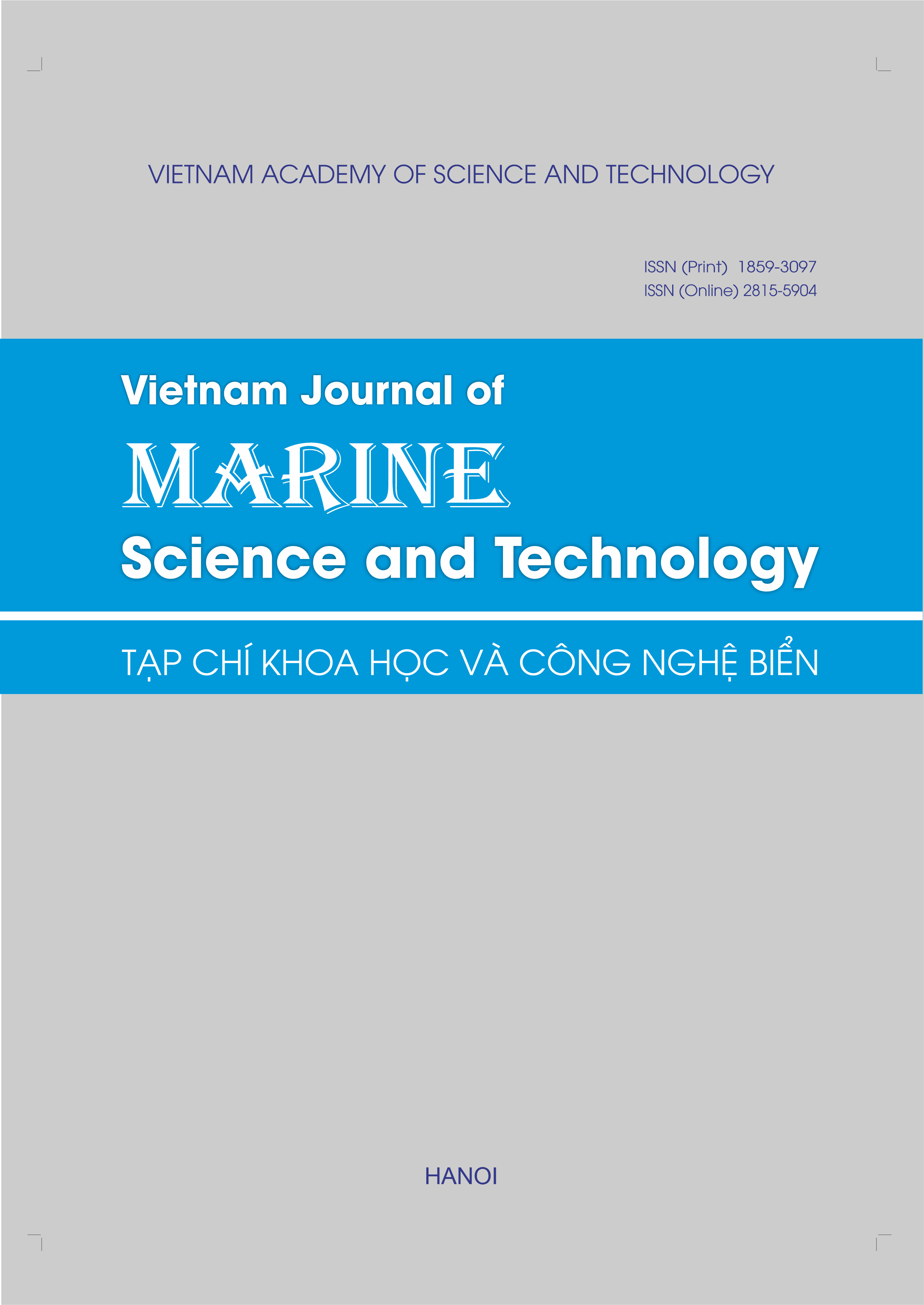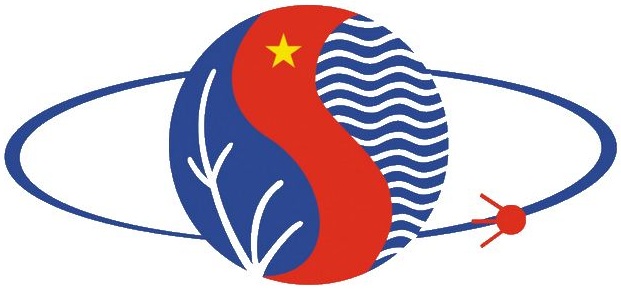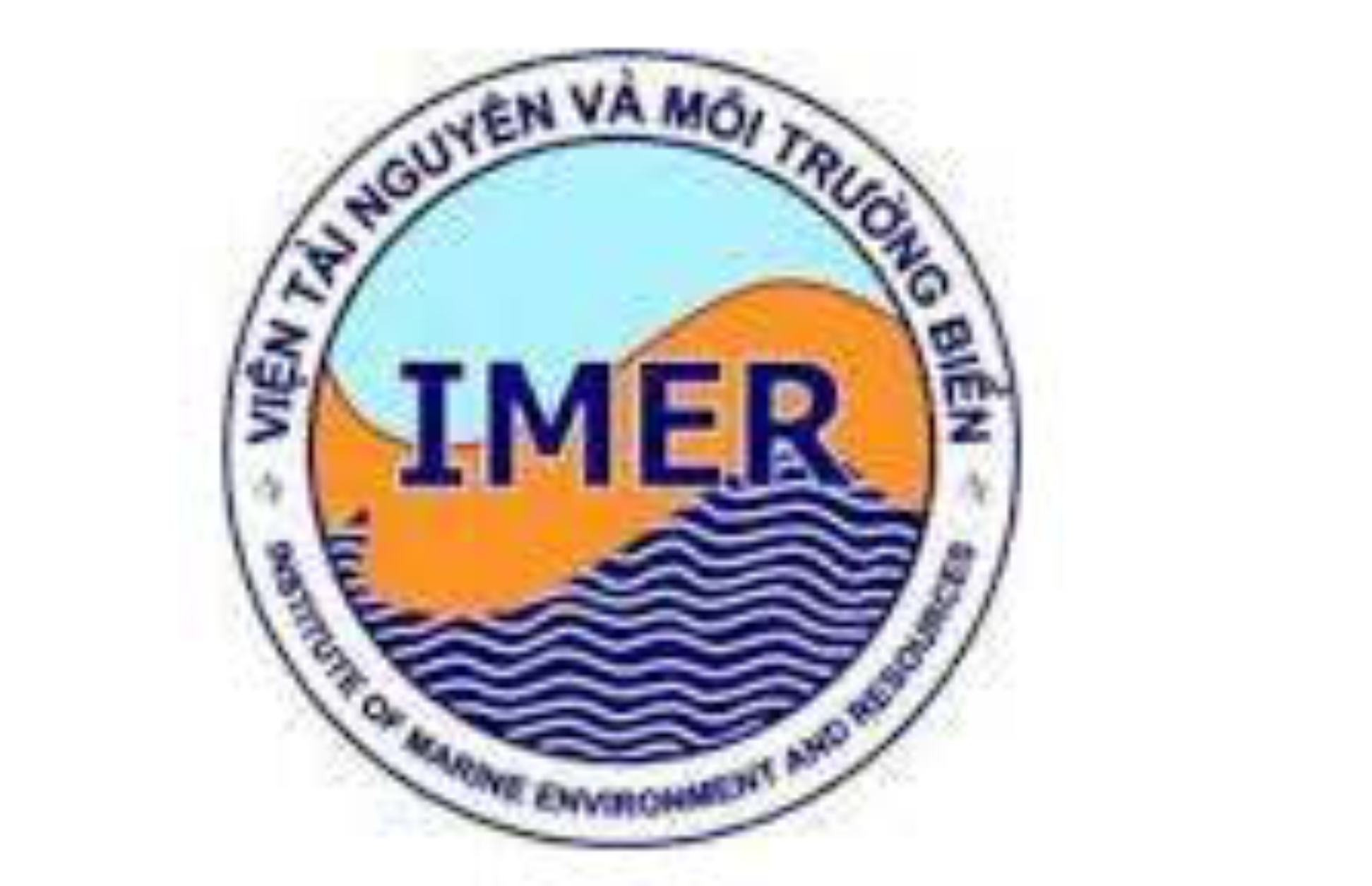Initial understanding and assessment of role of oceanographic features for ferromanganese crusts and nodules in the East Vietnam Sea
Author affiliations
DOI:
https://doi.org/10.15625/1859-3097/15775Keywords:
East Vietnam Sea, Fe-Mn, oceanographic.Abstract
The iron and manganese content in marine water is very small but the volume of ferromanganese nodules contributes 30% of the total mass of polymetallic nodules and crusts in marine and ocean floor. This suggests that the process of enrichment of ferromanganese crusts and nodules is not only contributed by chemical processes but also by oceanographical and biological processes. The article indicates the initial results of analyzing oceanographic, biological, and environmental features to understand their roles in the growing ferromanganese crusts and nodules and to predict the distribution of ferromanganese crusts and nodules in the East Vietnam Sea. As a result, ferromanganese crusts and nodules in the East Vietnam Sea can be distributed in the continental slopes, where upwelling and downwelling currents occur, to ensure enough dissolved oxygen concentration for the enrichment of ferromanganese crusts and nodules as well as to meet required conditions for microbial activity, which is involved in these processes. However, due to the limitations of the results of studying the enrichment of ferromanganese crusts and nodules in the East Vietnam Sea, the paper just shows the prediction of the distribution of ferromanganese crusts and nodules. Thus, it is necessary to carry out the expedition for enrichment processes of ferromanganese crusts and nodules and to determine the factors that impacted the growing ferromanganese crusts and nodules in the East Vietnam Sea.Downloads
Metrics
References
Hein, J. R., Koschinsky, A., Bau, M., Manheim, F. T., Kang, J. K., and Roberts, L., 2000. Cobalt-rich ferromanganese crusts in the Pacific. Handbook of Marine Mineral Deposits, 18, 239–273.
Hein, J. R., and Koschinsky, A., 2014. Deep-ocean ferromanganese crusts and nodules.
Hein, J. R., Mizell, K., Koschinsky, A., and Conrad, T. A., 2013. Deep-ocean mineral deposits as a source of critical metals for high-and green-technology applications: Comparison with land-based resources. Ore Geology Reviews, 51, 1–14.
Lusty, P. A., Hein, J. R., and Josso, P., 2018. Formation and occurrence of ferromanganese crusts: earth's storehouse for critical metals. Elements, 14(5), 313–318.
Koschinsky, A., and Halbach, P., 1995. Sequential leaching of marine ferromanganese precipitates: Genetic implications. Geochimica et Cosmochimica Acta, 59(24), 5113–5132.
Muiños, S. B., Hein, J. R., Frank, M., Monteiro, J. H., Gaspar, L., Conrad, T., Pereira, H. G., and Abrantes, F., 2013. Deep-sea Fe-Mn crusts from the northeast Atlantic Ocean: composition and resource considerations. Marine Georesources & Geotechnology, 31(1), 40–70.
Zhong, Y., Chen, Z., González, F. J., Hein, J. R., Zheng, X., Li, G., Luo, Y., Mo, A., Tian, Y., and Wang, S., 2017. Composition and genesis of ferromanganese deposits from the northern South China Sea. Journal of Asian Earth Sciences, 138, 110–128.
Jiang, X. D., Sun, X. M., and Guan, Y., 2019. Biogenic mineralization in the ferromanganese nodules and crusts from the South China Sea. Journal of Asian Earth Sciences, 171, 46–59.
Guan, Y., Sun, X., Ren, Y., and Jiang, X., 2017. Mineralogy, geochemistry and genesis of the polymetallic crusts and nodules from the South China Sea. Ore Geology Reviews, 89, 206–227.
Wang, X., and Müller, W. E., 2009. Marine biominerals: perspectives and challenges for polymetallic nodules and crusts. Trends in Biotechnology, 27(6), 375–383.
Koschinsky, A., and Hein, J. R., 2003. Uptake of elements from seawater by ferromanganese crusts: solid-phase associations and seawater speciation. Marine Geology, 198(3–4), 331–351.
Marino, E., González, F. J., Somoza, L., Lunar, R., Ortega, L., Vázquez, J. T., Reyes, J., and Bellido, E., 2017. Strategic and rare elements in Cretaceous-Cenozoic cobalt-rich ferromanganese crusts from seamounts in the Canary Island Seamount Province (northeastern tropical Atlantic). Ore Geology Reviews, 87, 41–61.
Konstantinova, N., Cherkashov, G., Hein, J. R., Mirão, J., Dias, L., Madureira, P., Kuznetsov, V., and Maksimov, F., 2017. Composition and characteristics of the ferromanganese crusts from the western Arctic Ocean. Ore Geology Reviews, 87, 88–99.
Conrad, T., Hein, J. R., Paytan, A., and Clague, D. A., 2017. Formation of Fe-Mn crusts within a continental margin environment. Ore Geology Reviews, 87, 25–40.
Uu, D. V., and Brankart, J. M., 1997. Seasonal variation of temperature and salinity fields and water masses in the Bien Dong (South China) Sea. Mathematical and Computer Modelling, 26(12), 97–113.
Wyrtki, K., 1961. Scientific Results of Marine Investigations of the South China Sea and the Gulf of Thailand 1959–1961 Physical Oceanography of the Southeast Asian Waters. NAGA report, 2, 195.
Hoang, X. N., 1991. A quantitative analyse of the current field offshore Vietnam. Collection of Marine Research Works, 2, 43–62.
Pohlmann, T., 1987. A three dimensional circulation model of the South China Sea. In Elsevier Oceanography Series (Vol. 45, pp. 245–268). Elsevier.
Shaw, P. T., and Chao, S. Y., 1994. Surface circulation in the South China sea. Deep Sea Research Part I: Oceanographic Research Papers, 41(11–12), 1663–1683.
Chao, S. Y., Shaw, P. T., and Wu, S. Y., 1996. Deep water ventilation in the South China Sea. Deep Sea Research Part I: Oceanographic Research Papers, 43(4), 445–466.
Jilan, S., 2004. Overview of the South China Sea circulation and its influence on the coastal physical oceanography outside the Pearl River Estuary. Continental Shelf Research, 24(16), 1745–1760.
Chen, C. T., Wang, C. H., Soong, K. Y., and Wang, B. J., 2001. Water temperature records from corals near the nuclear power plant in southern Taiwan. Science in China Series D: Earth Sciences, 44(4), 356–362.
Qu, T., Girton, J. B., and Whitehead, J. A., 2006. Deepwater overflow through Luzon strait. Journal of Geophysical Research: Oceans, 111(C1).
Xie, Q., Xiao, J., Wang, D., and Yu, Y., 2013. Analysis of deep-layer and bottom circulations in the South China Sea based on eight quasi-global ocean model outputs. Chinese Science Bulletin, 58(32), 4000–4011.
Vo Van Lanh, Tong Phuoc Hoang Son, 2000. Basic geostrophic cyclone gyres in offshore region in Bien Dong and their thermohaline features over the annual cycle. Presentation on Science Conference “Bien Dong - 2007”, Nha Trang 19–22 Sept. 2000. (in Vietnamese).
Bui Hong Long, Nguyen Ngoc Lam, Polhmann, T., Voss, M., Wiesner, M., 2007. The Vietnamese - German Protocol Cooperation Programme in Marine Science during 2003-2006: Archives from the Study on Upwelling in South Central Coast of Vietnam. Proceedings on National Science Conference “Bien Dong - 2007”, 12–14 Sept. 2007, Nha Trang. pp. 3–14. (in Vietnamese).
Bui Hong Long, Tran Van Chung, 2009. Calculations of currents in the upwelling region along South-Central Vietnamese coast, using three dimensions (3-D) nonlinear model. Vietnam Journal of Marine Science and Technology, 9, 1–25.
Bui Hong Long, 2009. Upwelling phenomenon in Vietnamese Sea. Publishing Houese for Science and Technology, Hanoi.
Vo Van Lanh, Nguyen Tac An, Nguyen Van Luc, Le Phuoc Trinh, Nguyen Huu Phung, Nguyen Kim Vinh, 1996. Contribution on Coastal Strong Upwelling in Southern Central Vietnam. Science and Technics Publishing House, Hanoi.
Hu, J., and Wang, X. H., 2016. Progress on upwelling studies in the China seas. Reviews of Geophysics, 54(3), 653–673.
Zhang, D. C., Liu, Y. X., and Li, X. Z., 2015. Characterization of bacterial diversity associated with deep sea ferromanganese nodules from the South China Sea. Journal of Microbiology, 53(9), 598–605.
Ehrlich, H. L., 2002. Geomicrobiology of manganese. Geomicrobiology.
Wang, X., Schröder, H. C., Schloßmacher, U., and Müller, W. E., 2009. Organized bacterial assemblies in manganese nodules: evidence for a role of S-layers in metal deposition. Geo-Marine Letters, 29(2), 85–91.
Downloads
Published
How to Cite
Issue
Section
License
Copyright (c) 2020 Vietnam Journal of Marine Science and Technology

This work is licensed under a Creative Commons Attribution-NonCommercial-NoDerivatives 4.0 International License.









